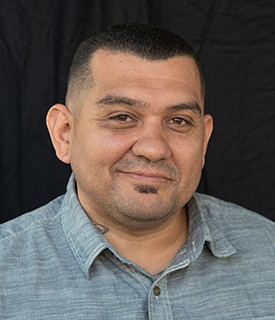Eye movement desensitization and reprocessing (EMDR) therapy was initially established in 1987 to treat post-traumatic stress disorder (PTSD) and is driven by the Adaptive Information Processing model. The Adaptive Information Processing model assesses symptoms of PTSD that result from past distressing experiences and continue to cause suffering because the individual was unable to manage the memory effectively. The untreated memories include the emotions, thoughts, beliefs, and physical feelings that transpired during the event. When the memories are initiated, the disturbing emotions are felt and trigger the symptoms of PTSD.
EMDR therapy is considered a non-trauma-focused treatment that seeks to decrease PTSD symptoms, but not by targeting thoughts, memories, and feelings related to the traumatic event. Instead, the methods focus on relaxation, stress training, or interpersonal therapy.
EMDR for PTSD
EMDR therapy varies from other trauma-focused treatments. It does not incorporate extensive exposure to stressful memories, comprehensive descriptions of the trauma, challenging dysfunctional beliefs, or homework assignments. Managing a particular memory is typically completed in an eight-phase approach within three to 12 sessions.
EMDR is a psychotherapy approach that encourages the client to momentarily focus on the traumatic memory while instantaneously experiencing bilateral stimulation (BLS), which is associated with decreasing the intensity and emotion related to the traumatic experiences.
The Phases of EMDR
EMDR therapy uses an eight-phase approach that includes history-taking, preparing the client, assessing the target memory, processing the memory to adaptive resolution, and evaluating treatment results.
Phase 1: History-Taking
Obtaining a comprehensive history and conducting assessments need to be completed first. Next, the counselor and client work together to acknowledge targets for treatment, such as memories, triggers, or goals.
Phase 2: Preparing the Client
The counselor explains the treatment and introduces the client to the procedures by practicing eye movements and relaxation practices.
Phase 3: Assessment
This phase involves activating the memory targeted in the session by identifying and assessing the memory components: image, cognition, affect, and body sensation. The counselor will use two different measures during the EMDR therapy sessions to evaluate changes in emotion and awareness called the Validity of Cognition (VOC) scale and the Subjective Units of Disturbance (SUD) scale. Both standards are used again throughout the treatment process, agreeing with the standardized methods. Examples of each are provided below:
- Validity of Cognition (VOC) scale: The counselor would ask, “When you think of the experience, how true do those words (the positive cognition) feel to you now on a scale of one to seven, where one is completely false, and seven is entirely true?”
- Subjective Units of Disturbance (SUD) scale: After the client states what emotion they are feeling, the counselor would ask, “On a scale of one to ten, where zero is no disturbance or neutral and ten is the highest disturbance, how disturbing does it feel now?”
Phase 4: Desensitization
The client concentrates on the specific memory and engages in eye movements. Next, the client will report any new thoughts, and the counselor determines the focus for the next set of BLS. This phase continues until the client no longer feels stress with the memory.
Phase 5: Installation
In this phase, an emphasis is placed on the optimistic belief that the client decides upon.
Phase 6: Body Scan
The client is asked to observe their physical reaction while thinking of the experience and the positive cognition while identifying remaining somatic distress.
Phase 7: Closure
This phase occurs when the sessions are coming to an end. If the targeted memory is not fully managed, specific guidelines and methods are applied to offer control and confirm safety until the next session.
Phase 8: Re-Evaluation
The counselor assesses the client’s psychological state, if treatment effects have been sustained, what memories have developed since the last session, and works with the client to recognize targets for the current session.
Benefits of EMDR for PTSD
The efficacy of EMDR therapy corresponds with the many benefits the treatment provides. When a client completes EMDR treatment, they will benefit from positive outcomes, including:
- Reduced PTSD symptoms
- Reduced anxiety
- Increased capability to handle fear
- Reduced sensitivity to traumatic experiences
- Decreased fear
- Enhanced functioning
- Improved social skills
- Increased mental stability
Seeking Help for PTSD
It can feel overwhelming when searching for help with mental health disorders. The Substance Abuse and Mental Health Services Administration (SAMHSA) offers the Behavioral Health Treatment Services Locator to help find mental health services in your area. In addition, you can find helpful information about treatment facilities that provide specialty care by using SAMHSA’s Early Serious Mental Illness Treatment Locator.
There should be no shame in seeking help for a mental health disorder. Post-traumatic stress disorder (PTSD) is one of the most misunderstood mental health illnesses. Eye movement desensitization and reprocessing (EMDR) therapy can help decrease PTSD symptoms and bring peace of mind with recovery. If you or a loved one are ready to begin your journey to recovery, we want to help. Crownview Co-Occurring Institute in Oceanside, CA, provides psychiatric treatment for many levels of mental disorders. Our individualized approach ensures that each client receives excellent care with positive results. CCI offers treatment plans to meet the physical and emotional needs for recovery. We will support you from crisis to independence by providing a healing environment with a considerate team of professionals ready to help you regain control of your life. Let CCI help you with evidence-based treatments for a successful long-term recovery. Call us today at (760) 477-4754.

 Kimberly Gilkey, RADT-1
Kimberly Gilkey, RADT-1 Timothy Wieland
Timothy Wieland David Abram
David Abram Mark Melden, DO/DABPN
Mark Melden, DO/DABPN Jeffrey Klein
Jeffrey Klein Nathan Kuemmerle, MD
Nathan Kuemmerle, MD Laura Hopper, Ph.D.
Laura Hopper, Ph.D. Rebecca McKnight, PsyD
Rebecca McKnight, PsyD Milena Dun, PhD
Milena Dun, PhD Brieana Turner, MA, LMFT
Brieana Turner, MA, LMFT Brittany Perkins, MA, LMFT
Brittany Perkins, MA, LMFT Joanne Talbot-Miller, M.A., LMFT
Joanne Talbot-Miller, M.A., LMFT Alexis Weintraub, PsyD
Alexis Weintraub, PsyD Kathleen McCarrick, MSW, LSW
Kathleen McCarrick, MSW, LSW Christina Lam, N.P.
Christina Lam, N.P. John P. Flores, SUDCC-IV-CS, CADC II
John P. Flores, SUDCC-IV-CS, CADC II David Dalton, Facility Operations Director
David Dalton, Facility Operations Director Amy Thompson
Amy Thompson Kelly Schwarzer
Kelly Schwarzer Jovanna Wiggins
Jovanna Wiggins Alexandria Avalos, MSW, ACSW
Alexandria Avalos, MSW, ACSW Michelle Ertel
Michelle Ertel Emily Skillings
Emily Skillings Amanda Irrgang, Registered Dietitian Nutritionist (RDN)
Amanda Irrgang, Registered Dietitian Nutritionist (RDN) Gianna Melendez
Gianna Melendez Jodie Dahl, CpHT
Jodie Dahl, CpHT Jordan Granata, PsyD
Jordan Granata, PsyD